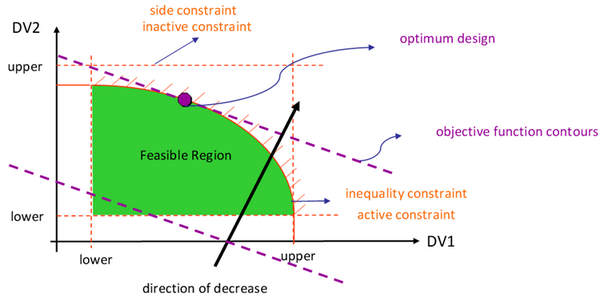Criteria for Formulating an Optimization Problem
In order to formulate a design problem as an optimization problem you must identify input variables, objective functions, and constraint functions.
- Objectives
- Constraints
- Design Space
- f(x) is the vector of system output responses that are used as objectives.
- g(x) and h(x) is the vector or system output responses that are used as inequality and equality constraints.
- x is the vector of input variables.
- Optimum Design
- The point or design that minimized (maximized) the objective function and at the same time satisfy all the constraints.
- Violated Constraint
- Constraint that is not satisfied.
- Active Constraint
- Constraint that is satisfied exactly; equality constraints are active for feasible designs.
- Inactive Constraint
- Constraint that satisfied but not on the bound.
- Feasible Design
- A point or a design that satisfies all the constraints.
- Infeasible Design
- A design that violates one or more constraints.

Figure 1. Design Space Definitions